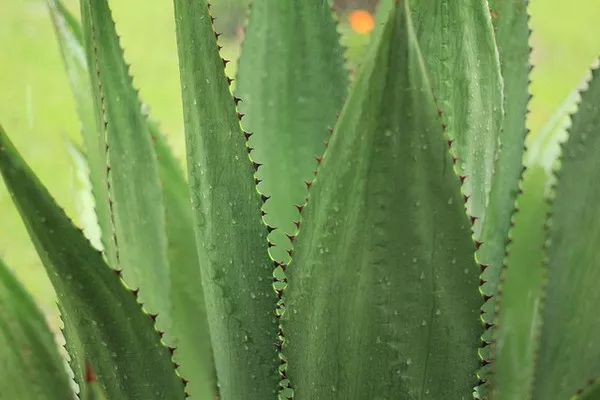Succulents have gained immense popularity due to their unique appearance, low maintenance requirements, and ability to thrive in diverse environments. Propagating succulents from cuttings is a rewarding and economical way to expand your collection and share these delightful plants with friends and family. In this comprehensive guide, we will explore the step-by-step process of planting succulent cuttings, providing essential tips to ensure successful propagation and healthy growth.
Choosing the Right Cuttings
Selecting healthy cuttings is crucial for successful propagation. Look for plump and mature leaves or stems that have not been damaged or diseased. The chosen cuttings should be firm and show no signs of shriveling or wilting. Avoid using leaves or stems that are too small, as they may not have enough nutrients to root and grow into a new plant.
Allowing Cuttings to Callus
Before planting, allow the cut ends of the succulent leaves or stems to callus. This involves leaving the cuttings in a dry, well-ventilated area for a day or two, allowing the cut surfaces to form a protective layer. Callusing prevents moisture loss and reduces the risk of rot when the cuttings are planted.
Preparing the Planting Medium
Choosing the right planting medium is essential for successful propagation. Succulents prefer well-draining soil to prevent waterlogged roots. A popular planting mix consists of equal parts of potting soil, coarse sand, and perlite. This mixture provides the ideal balance of aeration and moisture retention, promoting root development.
Planting the Succulent Cuttings
Once the cuttings have formed a callus, it’s time to plant them. Fill a clean and sterilized container with the prepared planting medium. Make small holes in the soil using a pencil or stick, ensuring they are deep enough to accommodate the cut end of the cutting without bending or breaking it.
Insert the cut end of the succulent cutting into the hole, gently pressing the soil around it to provide stability. If you’re propagating multiple cuttings, ensure they are spaced adequately to prevent overcrowding as they grow.
Initial Care and Placement
After planting, water the cuttings lightly to settle the soil around the roots. Avoid overwatering, as succulents are highly susceptible to root rot. Place the container in a location with bright, indirect sunlight to encourage healthy growth.
Watering and Humidity
While succulents are drought-tolerant, they still require some water to establish roots and grow. Water the cuttings sparingly, allowing the soil to dry out between waterings. A good rule of thumb is to water only when the soil is completely dry, and the leaves show signs of slight wrinkling.
Avoid using a spray bottle to mist the cuttings, as this can lead to fungal issues. Instead, apply water directly to the soil, keeping the foliage dry. Also, avoid using a saucer under the container to prevent waterlogged soil.
Temperature Considerations
Succulents thrive in warm temperatures, but they can withstand a range of conditions. For optimal growth, maintain a temperature range between 65°F to 80°F (18°C to 27°C). Be cautious of exposing the cuttings to extreme temperature fluctuations, as they can cause stress to the developing plants.
Root Development and Transplanting
With proper care, your succulent cuttings will begin to develop roots within a few weeks. You can gently tug on the leaves or stems to check for resistance, indicating the presence of roots. Once the roots have established, the cuttings are ready for transplanting into individual pots or the garden.
When transplanting, handle the newly rooted cuttings with care, ensuring minimal disturbance to the root system. Use the same well-draining soil mix in the new containers or planting area. Water lightly after transplanting and gradually acclimate the plants to their new environment.
Fertilization
Succulents are not heavy feeders, but providing them with a balanced fertilizer during their active growth phase can boost their health and appearance. Use a diluted liquid fertilizer specifically formulated for succulents, following the manufacturer’s instructions for application. Apply the fertilizer sparingly, usually once a month during the growing season (spring to early fall).
Pests and Diseases
Succulents are relatively resistant to pests and diseases, but it’s essential to monitor them regularly for any signs of trouble. Common pests that can affect succulents include mealybugs, aphids, and spider mites. For minor infestations, gently wipe the affected areas with a cotton swab dipped in rubbing alcohol. For severe cases, consider using a natural insecticidal soap or neem oil, following the product instructions carefully.
Conclusion
Planting succulent cuttings is a fulfilling and straightforward process, offering enthusiasts the opportunity to propagate their favorite varieties and expand their collection. By choosing the right cuttings, providing appropriate care, and ensuring the ideal growing conditions, you can enjoy the growth and development of new succulent plants that will grace your indoor or outdoor space with their beauty and resilience. With patience and dedication, you can become a successful succulent propagator and share the joys of these fascinating plants with others. Happy planting!

